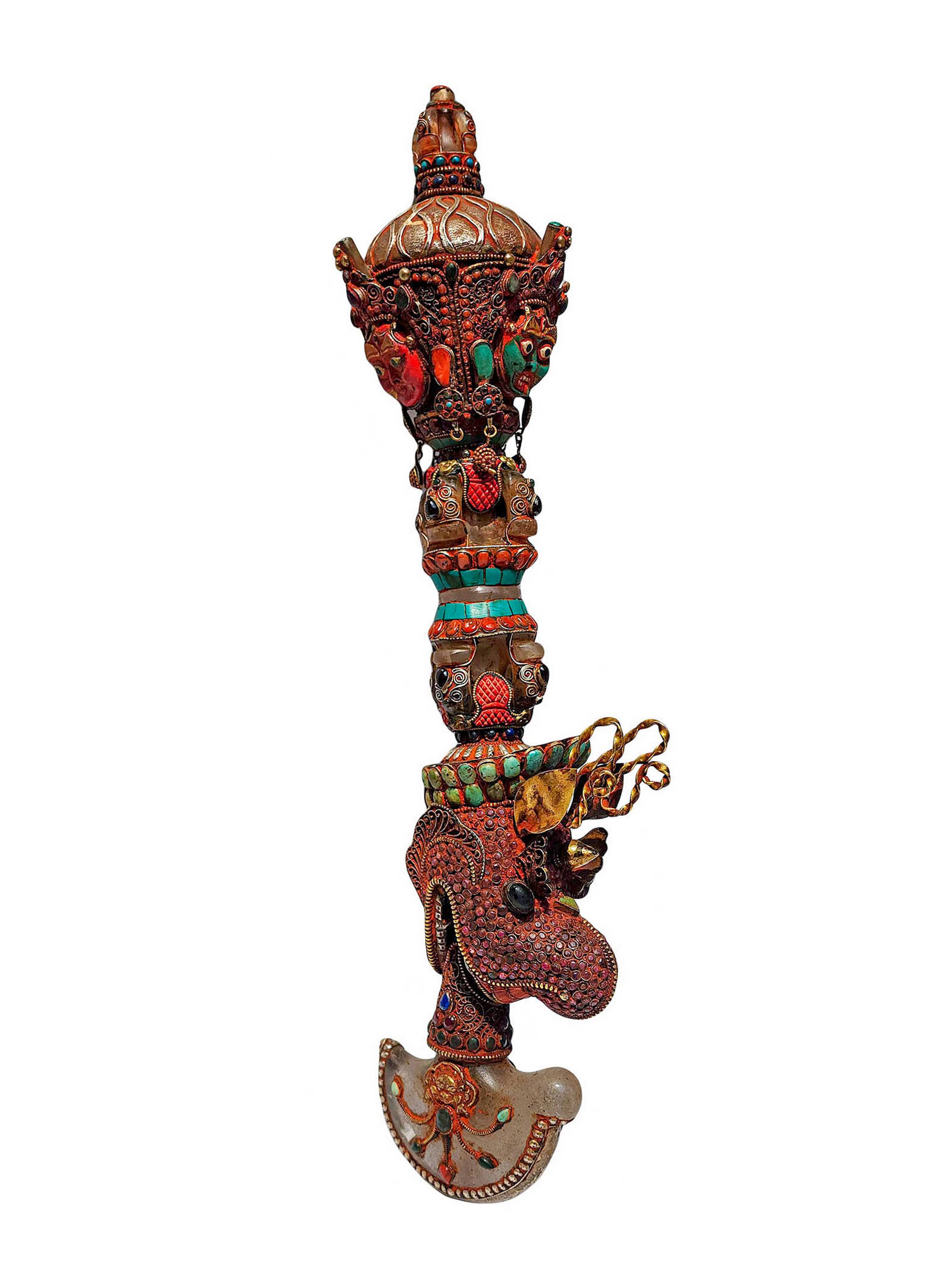Ritual Discount
We are providing 15% price on all ritual Items.
Kartika
A kartika is a small, crescent-shaped, hand-held ritual flaying knife used in the tantric ceremonies of Vajrayana Buddhism. The kartari is said to be "one of the quintessential attributes of the wrathful Tantric deities." It is commonly known as the "knife of the dakinis." Its shape is similar to the Inuit ulu or woman's knife, which is used for many things including cleaning skins.
Read More
While the kartari is normally held in the right hand of a dakini in Vajrayana iconography and spiritual practice, occasionally it can be seen being held by esoteric male deities, such as certain forms of Yamantaka. It is also found frequently in the iconography of the Tibetan Buddhist spiritual practice of Chöd.
The dakini's knife has a flat sharpened blue iron blade with a curved hook at its outer extremity, which enables the flaying activities of cutting, scraping, and pulling. Its faceted or eight-sided handle is attached to the upper edge of the blade by either a leaf-shaped golden mount or the wide-open mouth of a golden makara, and the handle's top is sealed by a half-vajra.
The same way that the bell and vajra are usually paired ritual items in Vajrayana spiritual practice and iconography (one is held in the right hand and the other simultaneously held in the left), the kartika usually appears as a pair with the kapala or "skull-cup".
The shape of the kartika, or trigug, with its crescent shape and the hook on the end, is derived from the shape of a traditional shape of the Indian butcher's knife.
Depictions of Vajrayogini typically contain the kartika as one of her attributes. In the iconography of the enlightened dakinis and tantric female yidams, it is common to find the hooked kartika knife in her right hand and the skull cup in her left, representing "the inseparable union of wisdom and skillful means."
Buddhist Axe
Ceremonial weaponry was used in tantric rituals to combat obstacles to enlightenment, such as ignorance, delusions, and selfishness. In 1407, a high-ranking Tibetan monastic patriarch visited the emperor of the Ming dynasty, known as Yongle. The Yongle emperor presented him with a number of gifts, of which this ritual axe was probably a component, since the axe bears his identifying inscription in a cartouche. Imperial Chinese workmanship is noted in the lush rendering of the lion heads from which the blades emerge, the calligraphic serpentine forms, and the cloud motifs.
Read More
Finishing: Stone Setting
The Kartika is adorned with an exquisite array of semi-precious stones, including turquoise, coral, and lapis lazuli. These stones are carefully selected and meticulously placed on the Kartika's surface, adding a touch of opulence and enhancing its overall beauty. Each stone is thoughtfully positioned using a high-quality adhesive, ensuring secure and long-lasting attachment. The vibrant colors and unique patterns of the stones create a captivating contrast against the backdrop of the Kartika, elevating its visual appeal and making it truly eye-catching.
Beyond their decorative purpose, these semi-precious stones carry symbolic significance in various cultures and traditions. Turquoise is often associated with protection and healing, coral represents vitality and passion, while lapis lazuli symbolizes wisdom and truth. The inclusion of these stones not only adds to the aesthetic allure of the Kartika but also imbues it with deeper meaning and cultural symbolism.
The intricate placement of these semi-precious stones showcases the meticulous craftsmanship and attention to detail that goes into the creation of the Kartika. It is a testament to the skill and artistic vision of the artisans who delicately adorn the statue, resulting in a truly remarkable and captivating piece of art.
Read More
Siku Design
This Kartika siku detailing, Siku is a process of putting patterns in the product by wielding copper, silver, or other metal wires, Creating various eye-catchy designs. this type of craftsmanship is unique to Nepali culture. and is made by very skillful artists of Nepal
